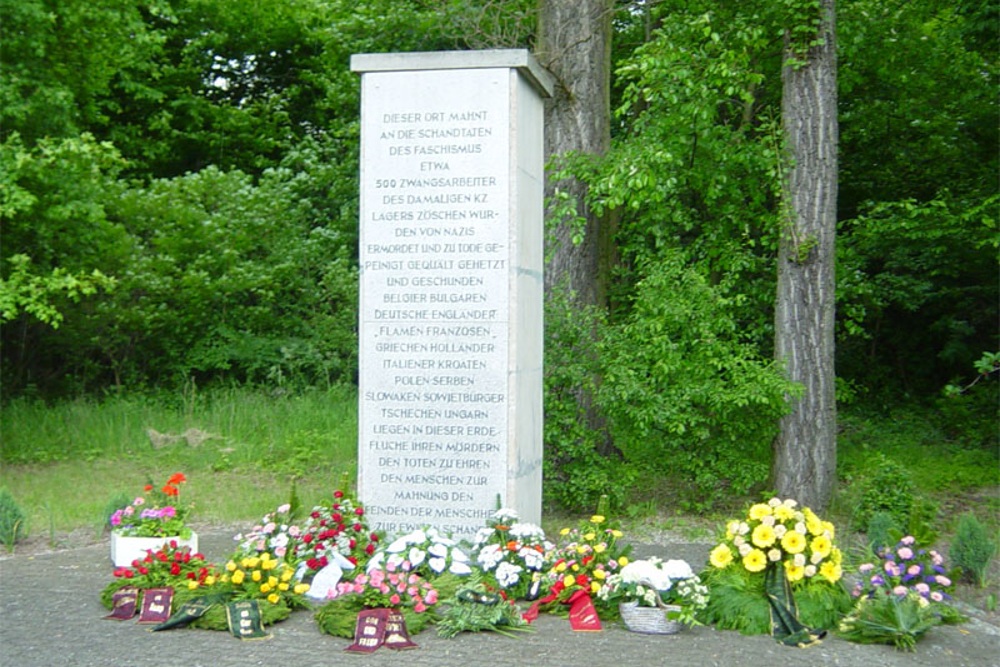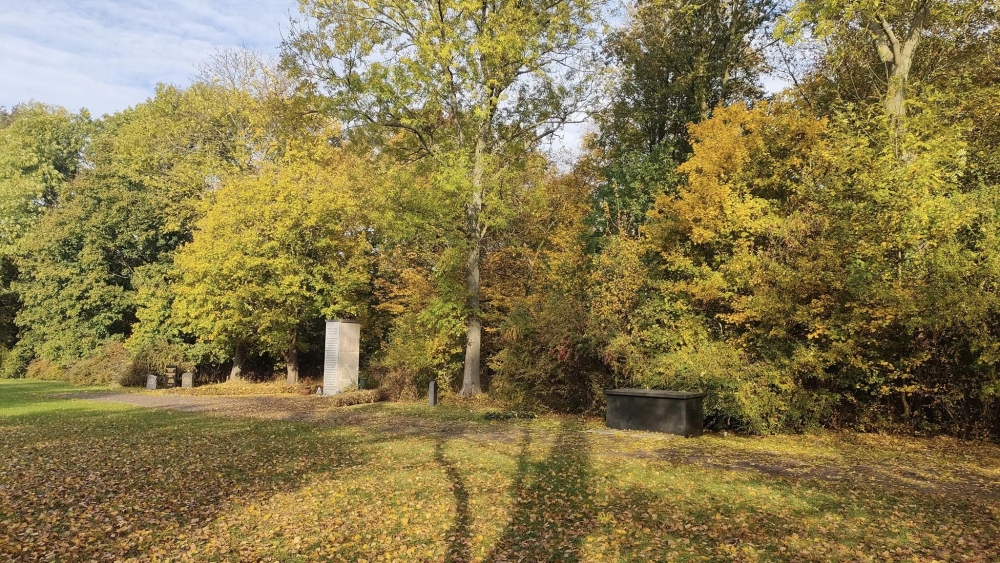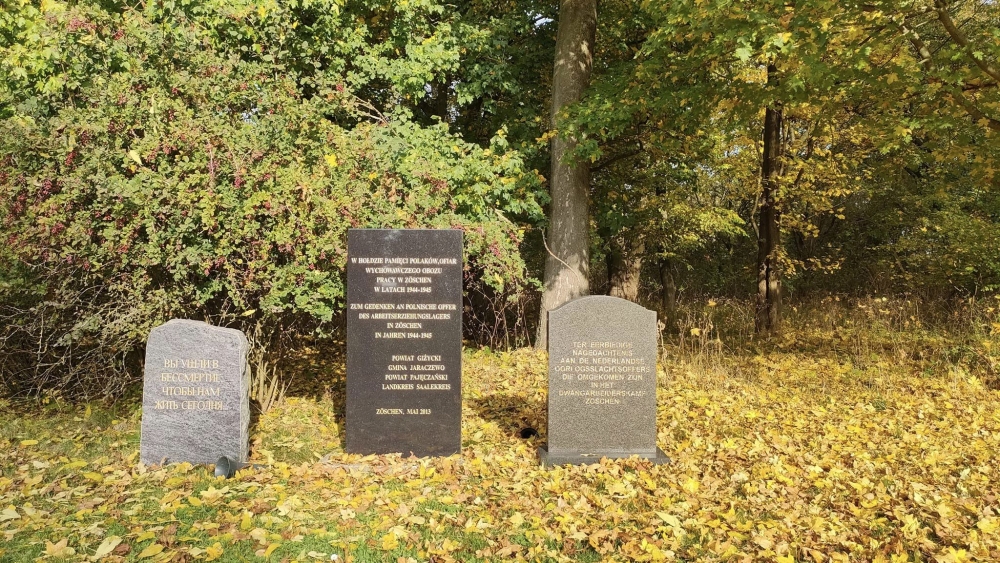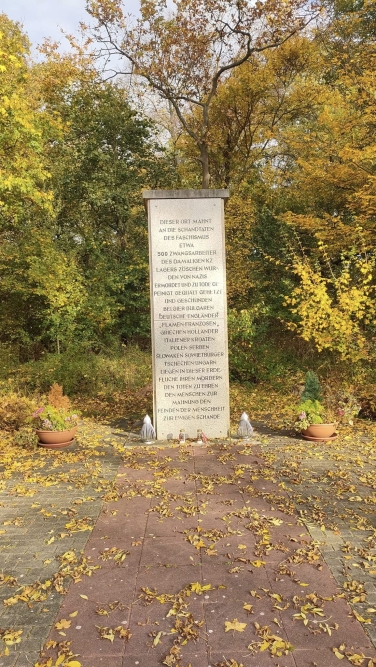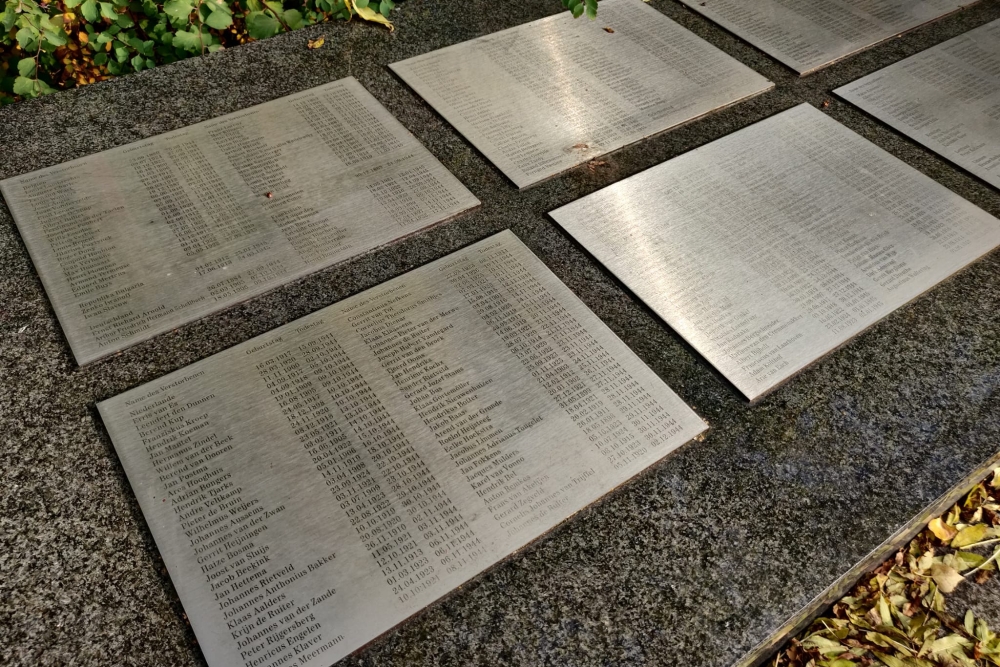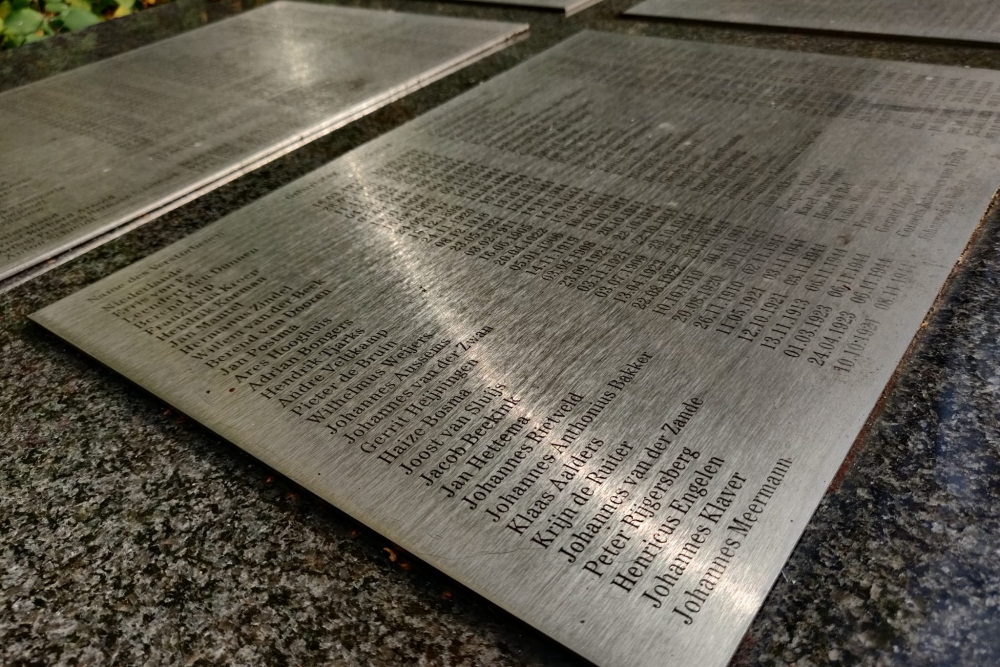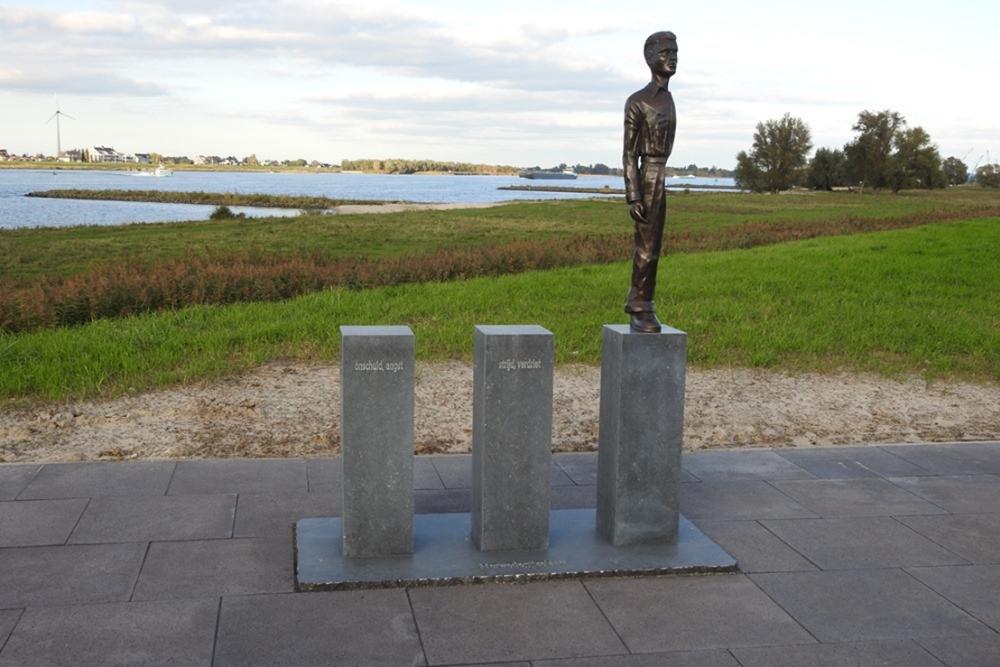Memorial Perished Forced Labourers Zöschen
In the former cemetery of Arbeitserziehungslager Zöschen, there is a monument to the approximately 500 forced labourers who died in this camp with the text:
Dieser Ort Mahnt - This place remembers
an die Schandtaten - to the shameful deeds
des Faschismus - of Fascism.
Etwa 500 Zwangsarbeiter - About 500 forced labourers
des damaligen KZ Lagers - of the then concentration camp
Zöschen wurden von - Zöschen were murdered by
Nazis ermordet und - Nazis murdered and
zu Tode gepeinigt gequält - tortured to death, mistreated,
gehetzt und geschunden - persecuted and beaten.
Belgier Bulgaren Deutsche - Belgians Bulgarians Germans
Englander Flamen Franzosen - English Flemish Frenchmen
Griechen Holländer Italiener - Greeks Dutch Italians
Croats Poland Serbs Slovaks
Soviet citizens Czechs Ungarn - Russians Czechs Hungarians
liegen in dieser Erde - lie in this earth
Fluche ihren Mördern - Curse their murderers
Den Toten zu Ehren - Honour the dead
Den Menschen zur Mahnug - The people to warning
Den Feinden der menschheit - The enemies of humanity
zur ewigen Schande. - to eternal shame
A second memorial commemorates the 130 Dutchmen who succumbed at Zöschen and there is a granite table with the names of all perished forced labourers.
Zöschen was an outer camp of Buchenwald and was built by prisoners in the summer of 1944. The Nazis set up special camps for work re-education during World War II, known as 'Arbeitserziehungslager'. Many potential forced labourers who did not want to go to Germany to work there refused and fled or went into hiding. When they were tracked down and arrested anyway, they were sent to the labour re-education camps indefinitely. This also happened to the young men rounded up in the big reprisal raids in the towns on the Merwede, the IJmond and villages in Groningen in April and May 1944.
Conditions in these camps were appalling and comparable to those in concentration camps. The prisoners from Zöschen were mainly put to work at the BUNA and Leuna Werke in Merseburg where, among other things, synthetic petrol was made. After a 12-hour working day with much beating, they had to lug bags of cement on their shoulders on the way back to the camp. Many men could no longer carry the heavy bags and the road to the camp turned white with cement powder.
The camp was liberated by the Americans in April 1945.
Do you have more information about this location? Inform us!
Source
- Text: TracesOfWar
- Photos: www.merwegijzelaars.nl (1, 2), Anja van der Starre (3, 4, 5, 6, 7)
- https://merwedegijzelaars.nl/kamp/6/lager-zoschen
Nearby
Monument
- Remembrance Oak Emperor William I - Günthersdorf
- War Memorial Großkugel - Großkugel
- War Memorial Trebnitz - Trebnitz
